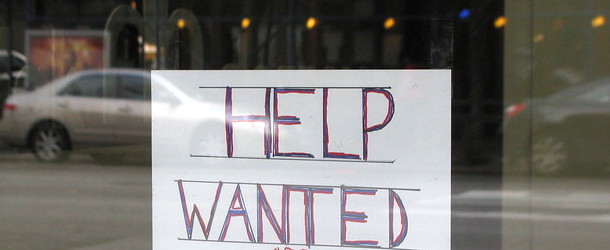A group of mortgage industry heavyweights have sent a letter to the Federal Reserve, HUD, FHFA, CFPB, Treasury Department, and the White House advocating for a uniform, streamlined mortgage relief program in the wake of the coronavirus outbreak.
It could result in waived mortgage payments for up to 12 months for millions of Americans, without the need for much paperwork if any.
However, they did stress that “those who can pay their mortgage, should pay their mortgage.”
How a Uniform Mortgage Relief Program Could Work
- Same assistance across all government agencies and the GSEs
- Limited documentation requirements
- Available to owner-occupants and investors
- Payment forbearance for 90 days initially
- Payment relief can be extended up to 12 months if necessary
- Followed by either a loan modification or the resumption of regular mortgage payments
- No credit hit, fees, penalties, etc.
- Nationwide foreclosure and eviction moratorium
The mortgage relief proposal would allow all homeowners with a mortgage to receive an initial forbearance of 90 days, in which monthly payments would not be due.
This would apply to those with conventional loans backed by Fannie Mae or Freddie Mac, along with those who hold a government loan, such as an FHA loan, USDA loan, or VA loan.
Importantly, it would provide universal relief regardless of loan type, without the stringent documentation typically required.
If we learned anything from HAMP and HARP, the last thing the industry needs is paperwork delays and bureaucratic procedures, especially with social distancing and lockdowns in place.
Anyway, the payment forbearance would eliminate the possibility of foreclosure, negative credit reporting, collection calls/letters, and late fees.
In terms of qualifying for relief, borrowers would simply need to make a “statement of hardship,” with no additional validation required.
Loan servicers could also identify customers eligible for COVID-19 assistance and offer deferred payments and other forbearance options.
Even those delinquent prior to the March 13th declaration date (the date the coronavirus emergency was declared) could receive payment forbearance.
As for homeowners with jumbo loans or loans not backed by one of these agencies (portfolio mortgages), they’d likely need to inquire with their bank or loan servicer.
What Happens After the Mortgage Relief Runs Out?
- Those who are able can simply return to making their mortgage payments
- Those in need of more relief can receive a permanent loan modification without cost or penalty
- This might include a partial claim for government home loans
- And a Flex Mod for those with a conforming home loan
For some, it would be as simple as allowing homeowners to resume their previous mortgage payments, without any additional costs or penalties.
The accrued interest piece is unclear here, but freezing mortgage payments and the interest could certainly help a lot of people out. And could be argued as fair given the current situation is no one’s fault.
Those in greater need could receive an appropriate loan modification, which might vary based on the housing agency involved.
For example, a stand-alone partial claim for FHA loans and USDA loans, which is an interest-free second mortgage that includes the missed payments, due at sale or payoff.
Or a streamlined loan mod (Flex Mod) for Fannie Mae and Freddie Mac loans that brings the loan current with things like an extended term or reduced mortgage rate.
This payment relief would also be delivered without additional cost or penalty.
Tip: How is mortgage forbearance paid back?
Relief for Loan Servicers Needed to Make It All Work
At the same time, loan servicers will need relief to make it all work, especially non-depository mortgage servicers that don’t rely on cash deposits from customers like big banks.
“As background, when a borrower fails to make their monthly mortgage payment, the mortgage servicer must still pay the principal and interest to investors, as well as pay the real estate taxes, homeowners’ insurance, and mortgage insurance on their behalf.”
Loan servicers maintain liquid reserves to cover such advances, but with millions of Americans experiencing expected to see income disruption related to COVID-19, it will likely “strain and possibly overwhelm some servicers’ liquidity reserves, all of which were calculated and set aside for more ordinary times.”
The group estimated that if just 25% of the nation receives forbearance for three months, servicers will need to cover roughly $36 billion in missed payments.
That number would exceed $100 billion if this same number of homeowners were to miss nine monthly mortgage payments.
They propose a backstop liquidity source for these independent mortgage servicers, including two suggestions, one being Ginnie Mae’s Pass-Through Assistance authority, and the other the Federal Reserve’s 13(3) authority.
What About Refinances and Home Purchase Loans?
They also addressed new loan originations, which have faced some uncertainty given the closure of government offices and the limiting of face-to-face interactions.
To combat the appraisal issue, they have recommended waiving appraisals on rate and term refinances.
For other loans, they suggest a hybrid approach that uses external property review by the appraiser combined with a desktop review, along with interior photos from the real estate agent or seller.
For verification of employment, they question the reliability of employment confirmation at the moment, and for rate and term refinances, argue that being current on the loan could suffice.
The idea being to provide payment relief without the typical hoops to jump through, as a lower interest rate theoretically should reduce the probability of mortgage default.
They also note that title searches and recording deeds could be impossible unless local government offices reopen or find alternative solutions.
And are looking for solutions beyond remote closings to solve the face-to-face dilemma.
In other words, there seem to be more questions than answers, so new mortgages face some headwinds as well, even if mortgage rates are low.

